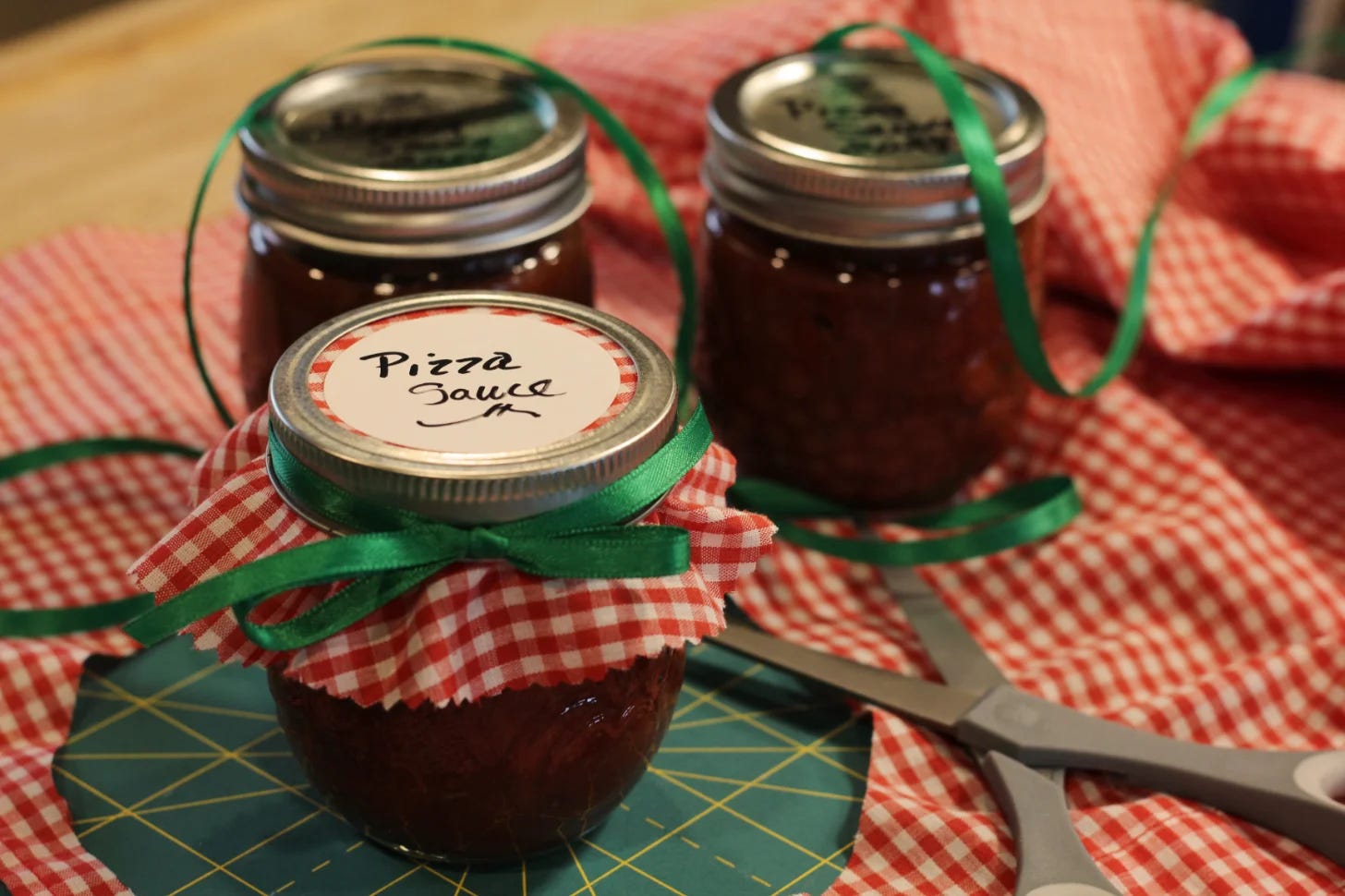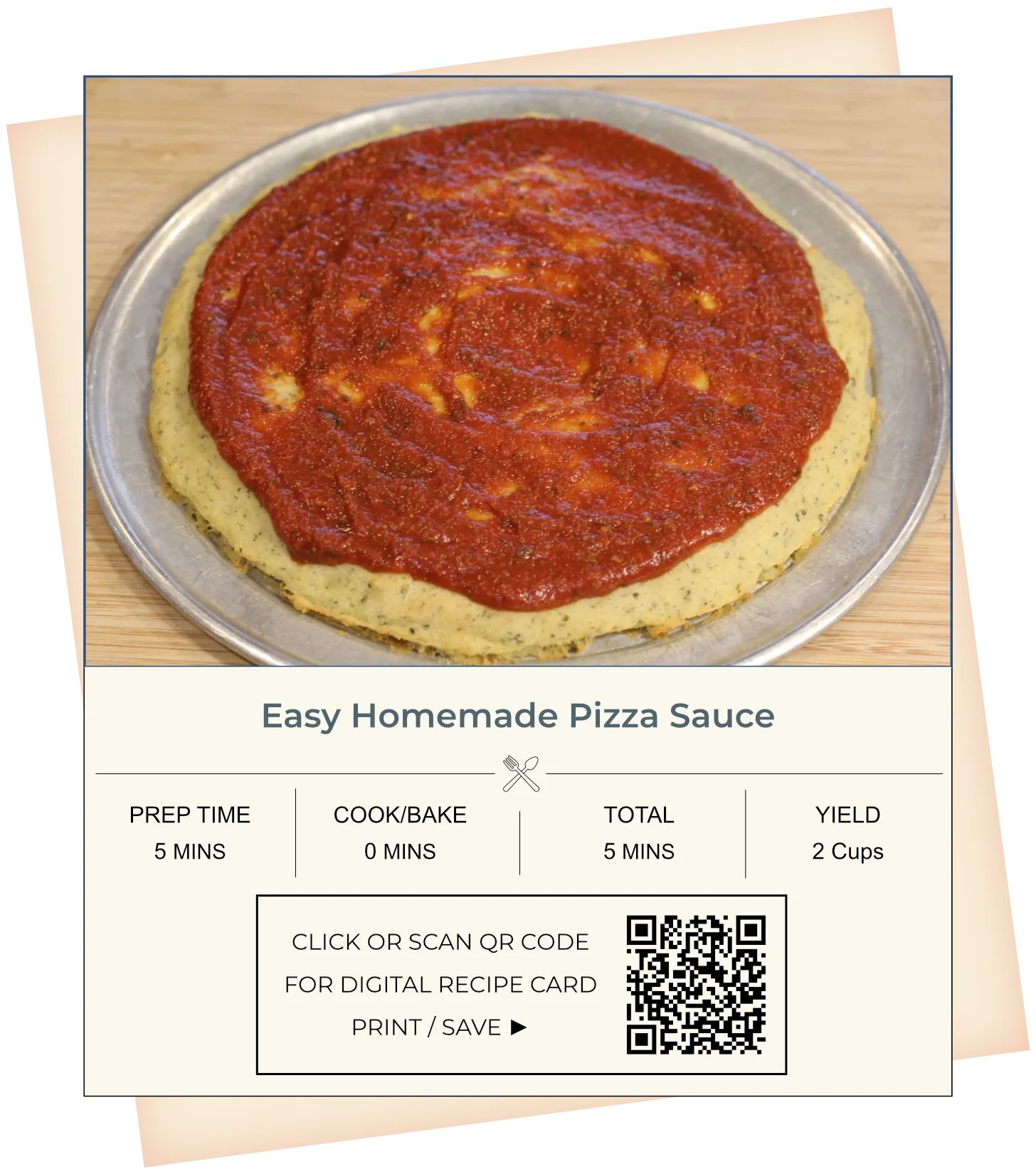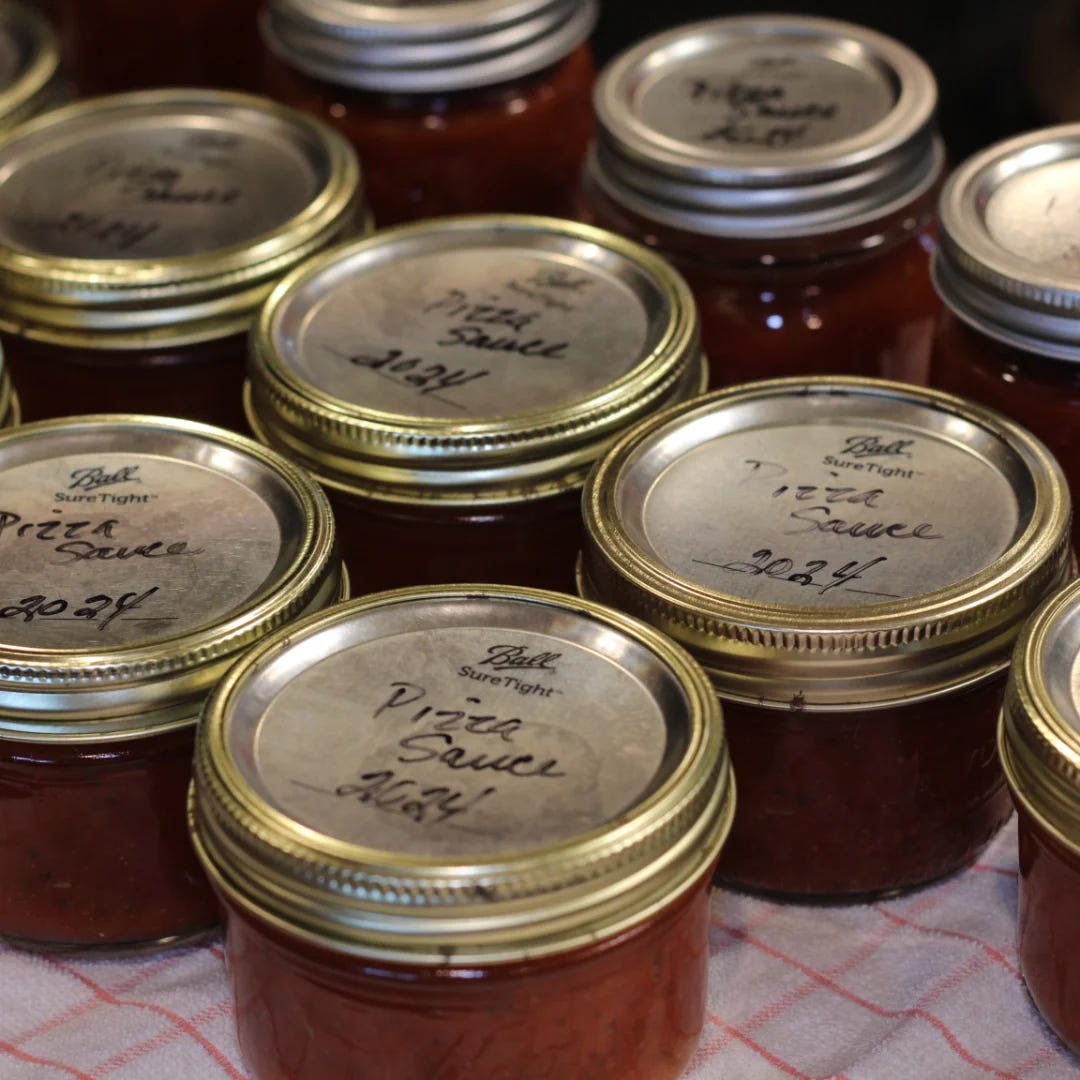My Easy, Homemade, No-cook Pizza Sauce
Pizza Part 2 + The Basics of Pizza Sauce, Tips for Customizing Pizza Sauce, Pairing Your Sauce with Pizza Dough and Toppings, & My Easy Recipe ...
The Basics of Pizza Sauce
The sauce is undoubtedly one of the most essential components when crafting the perfect pizza. A good pizza sauce elevates the entire experience, perfectly balancing flavors and complementing toppings. So, while I'm all about convenience, this week, I will try to convince you that you may want to reconsider adding that store-bought jar or can to your cart next time.
I'm talking about making homemade pizza sauce for two reasons that make a lot of sense. First, it's simple, allowing you to customize flavors to your liking, and second, it's budget-friendly.
So read on for this Live Fully Nourished installment, where I share my easy, homemade, no-cook pizza sauce recipe I've made for years. For the first time, I divulge my not-so-secret ingredients and include a few extra tips to enhance your homemade pizza creations.
What Constitutes a Good Pizza Sauce?
A well-crafted pizza sauce should be rich, flavorful, and consistent enough to spread evenly without making the crust soggy. Furthermore, it should feature a harmonious blend of tomatoes, herbs, and spices designed to enhance the overall taste of the pizza without overpowering it.
Why Homemade?
Making your pizza sauce yourself ensures you know precisely what goes into it. Homemade sauces always taste fresher. You can control the salt and sugar levels and customize the flavors according to your family's preferences. Additionally, this is a great way to impress your hungry eaters with your cookery skills, making memories that can last a lifetime!
How to get this recipe:
You can access the Homemade Pizza Sauce digital recipe card on GfreeDeliciously.com. Once there, you can easily adjust the servings, add ingredients to your grocery list, read about the equipment and resource recommendations we’ve used to make it, and quickly print, pin, or favorite it!
Keep scrolling 👇 for a quick summary of the recipe and a surprise freebie download below. 👩🍳
As an added benefit to paid subscribers, you can download a 3-ring-binder-ready printable recipe PDF. Find it at the end of this post to print or save for building a cookbook of all your favorites!
To get even more juicy details, read last week’s post, Pizza Part 1, which is all about creating …
A Pizza Seasoning Blend from Scratch
The Fundamental Components of a Delicious Homemade Pizza Seasoning Blend
... just in case you missed it and are up to the challenge of creating the ultimate gluten-free pizza!
Tips for Customizing Pizza Sauce
Add Some Vegetables: For a richer texture, consider adding finely chopped onions or bell peppers, sautéing them lightly before adding and serving.
Herbed Variations: Experiment with other fresh herbs like rosemary or thyme for a unique twist.
Smoky Flavor: Add a teaspoon of smoked paprika for a depth of flavor that works wonderfully with cheese.
Fresh Tomatoes: If available, substitute fresh tomatoes for the sauce part. Blanch and peel them, then chop and crush them. Cooking the sauce to reach the right consistency will be required for fresh tomatoes.
Sign Up & Register
Pairing Your Sauce with Pizza Dough and Toppings
Now that you've prepared your homemade pizza sauce, the next step is to pair it with the right dough and toppings.
Dough Options
Of course, you can choose from various brands of pre-made gluten-free pizza dough and mixes, including thick or thin-crust options. I love that several brands are available online and at most grocery stores. Still, making homemade gluten-free dough from scratch can also be rewarding.
To that point, you'll want to continue this pizza journey with Pizza Part 3 (coming soon), where I share my go-to recipe for gluten-free pizza crust from scratch. You won't want to miss this delicious recipe, which will only be available to PRO PASS (paid) subscribers.
Topping Suggestions
Classic Margherita: Fresh mozzarella, basil, and a drizzle of olive oil.
Pepperoni and Cheese: Traditional pepperoni with a blend of mozzarella and cheddar.
Veggie Lover's: Bell peppers, onions, mushrooms, and olives scattered across a rich cheese base.
BBQ Chicken: Use BBQ sauce as a base, topped with grilled chicken, pineapple, red onions, and a sprinkle of cilantro or parsley.
Favorite Gadgets & Tools for making this recipe…

💭 Final thoughts before you get started...
I truly hope I've convinced you that making homemade pizza sauce is a rewarding experience that significantly enhances your pizza night. Preserved jars of the sauce also make an excellent giftable food idea.

Free Homemade Pizza Sauce Gift Tags
Click on the button below to download the free gift tags to your computer.
Lastly, you’ll appreciate that this recipe is simple and fast to prepare and offers a depth of flavor that will have family and friends returning for second slices. So, consider stocking up on these simple recipe ingredients to unleash your culinary creativity, and enjoy crafting your pizza masterpieces with this delicious foundation—a beautiful, easy, homemade, no-cook pizza sauce. Whether you stick to classic recipes or experiment with flavors, your homemade sauce will impress!
Thanks for stopping by. Have a happy time saucing it up!
My Easy, Homemade, No-cook Pizza Sauce Recipe
Gluten-Free + Corn-Free, Dairy-Free, Egg-Free, Healthy Choices, Low-Carb, Low-Fat, Nut-Free, Keto-Friendly, Sodium Smart, Soy-Free, Vegan or Vegetarian, Whole30
Need a quick and easy homemade pizza sauce recipe? Use your favorite pizza seasoning blend to create a tasty homemade pizza sauce using one 15-ounce can of tomato sauce and six ounces (one can) of tomato paste. Our quick and easy no-cook pizza sauce recipe yields a rich, flavorful, saucy base that will elevate any pizza!
Equipment
Medium Bowl
Utensils (Whisk, Measuring Cups and Spoons, Rubber Spatula or Large Spoon)
Ingredients
▢ 15-ounce can of Tomato Sauce
▢ 6-ounce can Tomato Paste
▢ 1 tablespoon Pizza Seasoning [1]
▢ ½ teaspoon Kosher Salt or adjust to taste
Instructions
Mix the tomato sauce and paste in a medium-sized bowl until combined.
Whisk in the pizza seasoning and kosher salt, mixing well. Taste and add additional herbs and seasonings if desired.
Spread the mixture evenly over your pizza dough, cooking and adding toppings according to the dough instructions.
Kitchen Notes:
You can easily double this recipe and adjust it to suit your tastes.
Footnotes:
[1] Use your favorite gluten-free prepared pizza seasoning or make your own gluten-free, sodium-free homemade pizza seasoning blend using our recipe.
Tips for Success
Taste the sauce and add any additional seasonings before putting it on your pizza.
If you don't have tomato sauce, use a jar of canned tomatoes (diced or whole) and a can of tomato paste. Blend the tomatoes and the paste in a food processor or blender.
If you don't have any prepared pizza seasoning, use fresh herbs or a few dried ones if you have them!
Chop two fresh basil leaves and mince one garlic clove, then add them with a pinch or two of fresh or dried oregano (to taste) to ½ cups of sauce before using it on top of your pizza.
Do you only have dried herbs? Add up to ½ teaspoons (or to taste) of dried oregano, basil, garlic, and onion powders.
Add a pinch or two of red pepper flakes or ground cayenne pepper if you like spicy sauce.
Do you prefer a sauce with a bit of sweetness? Add a teaspoon of sugar to enhance the taste and help balance the tomatoes' acidity.
This delicious sauce can also be a dipping sauce for pizza, pizza rolls, or breadsticks. Of course, you could also use it to make calzones or stromboli.
Storage:
Store leftovers in an airtight container, such as a glass jar, in the refrigerator for 1 to 2 weeks. Alternatively, you can freeze the sauce in ice cube trays, a zipper bag, or another freezer-safe container for up to 6 months. Thaw frozen sauce in the refrigerator overnight or place the sealed container in a bowl of hot water until thawed.
Make a Large Batch & Process for Later:
Make a large batch using the serving slider on the main website recipe card. To preserve the sauce, process the finished pizza sauce in home canning jars for 35 minutes using the boiling water canning method on page 29 of the USDA Complete Guide to Home Canning.
Enjoy the Recipe! Scroll to the end for the downloadable PDF, which you can print and save to your recipe binder.
L♥VE this recipe? Have you tweaked it to be over-the-top delicious? Have a question? Please let everyone know in the comments below! 😉 It’s super helpful for other readers and me.
Are you looking for more recipes?
Find similar recipes to this one in…
Download the PDF printable 3-ring binder formatted page below.
Print, then punch to fit in your 3-ring binder, and file the recipe by name, alphabetically in the tabbed section:
Keep reading with a 7-day free trial
Subscribe to Live Fully Nourished @GfreeDeliciously to keep reading this post and get 7 days of free access to the full post archives.



















